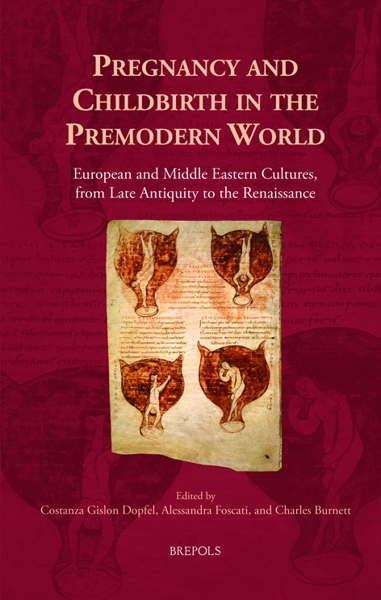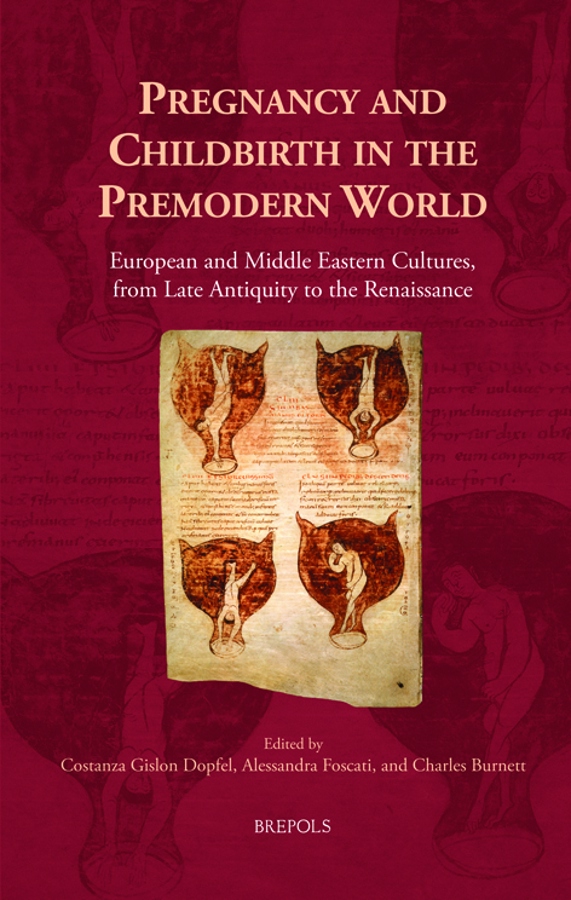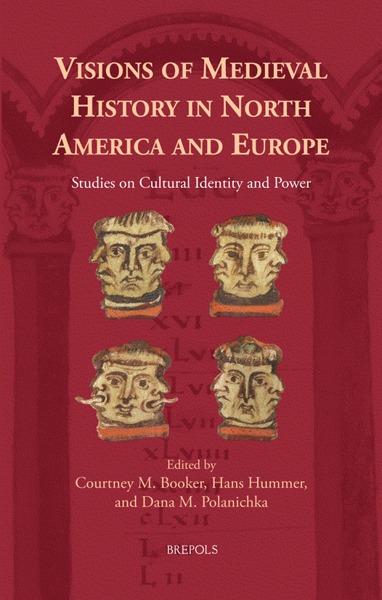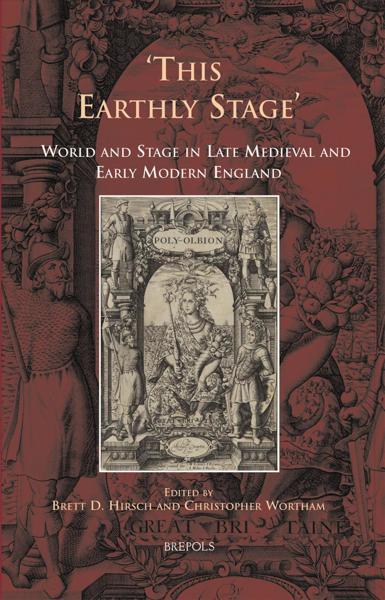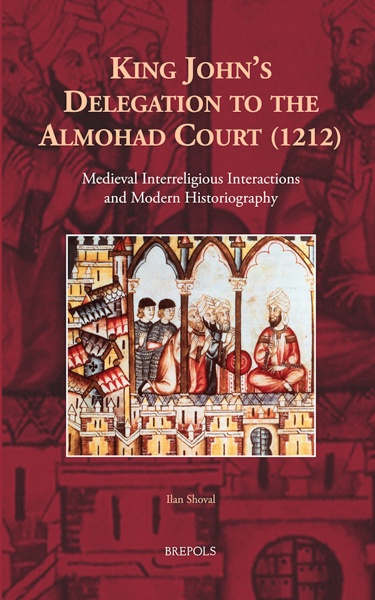
Pregnancy and Childbirth in the Premodern World
European and Middle Eastern Cultures, from Late Antiquity to the Renaissance
Costanza Gislon Dopfel, Alessandra Foscati, Charles Burnett (eds)
- Pages: xxiv + 357 p.
- Size:156 x 234 mm
- Illustrations:38 b/w
- Language(s):English
- Publication Year:2019
- € 110,00 EXCL. VAT RETAIL PRICE
- ISBN: 978-2-503-58055-5
- Hardback
- Available
- € 110,00 EXCL. VAT RETAIL PRICE
- ISBN: 978-2-503-58056-2
- E-book
- Available
Practices, perceptions, and representations of pregnancy and childbirth across regions and through history
“This is a very rich, truly interdisciplinary volume and I could do no more here than scratch the surface. Every article brings new facts, new interpretations, and a wealth of evidence. The almost forty illustrations inform and enrich the authors' arguments and add to the pleasure of reading this excellent collection.” (Renate Blumenfeld-Kosinski, in The Medieval Review, 21.02.06)
“The essay collection’s open-minded approach to the premodern maternal body tells a fascinating story. The physician’s patriarchal control of conception and birth leads to the woman’s perilous first-hand knowledge of the maternal body and concludes with celebrated mothers. The anthology is an important study challenging critical assumptions garnered from traditional medical sources.” (Frank Swannack, in Parergon, 38/1, 2021, p. 210)
« Finalement, cet ouvrage permet à un lecteur débutant de bénéficier d’une large introduction historique sur des questions qui font débat encore aujourd’hui dans certains milieux, autour de la valeur de la vie de la mère et de celle du fœtus, de l’appréhension de l’accouchement, ou encore de l’image de la nouvelle mère. Il offre à un lecteur confirmé de nombreuses comparaisons, tant dans l’espace que dans le temps, que dans les sources utilisées ou les méthodologies déployées, afin d’enrichir la réflexion sur tout ce qui entoure culturellement l’accouchement. » (Ninon Dubourg, dans Le Moyen Âge, 129/1, 2024, p. 263)
Costanza Gislon Dopfel, PhD, is Professor of Italian Culture and Chair of the Department of Art and Art History at Saint Mary’s College of California.
Alessandra Foscati, PhD in Medieval History is research fellow at the Beni Culturali department of Bologna University and at SISMEL (Società Internazionale per lo Studio del Medioevo Latino), Florence.
Charles Burnett, PhD, LGSM is Professor of the History of Arabic/Islamic Influences in Europe at the Warburg Institute, University of London, and Co-Director of the Centre for the History of Arabic Studies in Europe.
This volume of contributions from international scholars offers a cross-cultural and multi-period analysis of pregnancy and childbirth traditions in Western and Middle Eastern cultures. The studies focus on the ideas, practices, and visual representations surrounding pregnancy and birth-giving from Late Antiquity to the Renaissance and offer the reader the possibility of observing the perception, representation, and theoretic paradigm of these events in a wide range of cultural contexts. The collection fits within multiple traditions of specialized scholarship, yet its scope suggests a geographically global approach and a new, multicultural methodology that encompasses a wide range of practices, historical periods, and topics. On one hand, it participates in the well-established medical, historical, and iconographic discourse on childbirth and family that has enticed much interest over the last two decades; on the other, its unique thematic structure includes cultures and periods previously ignored in similar collections of essays. The articles span from Northern Europe to the Mediterranean, the Middle East, and India, and connect the experience of childbirth to the exchanges of knowledge, religious beliefs, and social practices. With its variety of topics and specializations, the volume encourages a global comparative approach to the cultural narrative surrounding the activities and attitudes connected to conception and birth, paying particular attention to material culture, religion, history, and iconography, as well as to the exchange and dispersion of medical knowledge.
Preface — CHARLES BURNETT
Indroduction — COSTANZA GISLON DOPFEL
Part 1: Cultural Exchanges and Transmission of Knowledge
Educating the Midwife. The Role of Illustration in Late Antique and Medieval Obstetrical Texts — FRANCESCA MARCHETTI
Pregnancy and Birth in Middle-Persian Zoroastrian Literature: The Exchange of Knowledge between India, Iran, and Greece in Late Antiquity — PAOLO DELAINI
Tracing the Maternal Body in Medieval Muslim Gynaecological Texts — KATHRYN KUENY
Calculating Birth: Abraham Ibn Ezra’s Role in the Creation and Diffusion of the Trutina Hermetis — SHLOMO SELA
Part 2: Birth, Death, and Magic
Mother and Child: Archaeological Evidence of Childbirth Complications in Medieval Normandy — ARMELLE ALDUC-LE BAGOUSSE, CÉCILE CHAPELAIN DE SERÉVILLE-NIEL, and RAPHAËLLE LEFEBVRE
'Girde hyr wythe thys mesure’: Birth Girdles, the Church, and Lollards — MARY MORSE
Prayer as Obstetric Practice at Thirteenth-Century La Cambre — SARA RITCHEY
Retracing Childbirth Through Hagiographical Texts and Canonization Processes in Italy and France between the Thirteenth and Sixteenth Centuries — ALESSANDRA FOSCATI
Part 3: Lying-in and Holy Birth: Tradition, Iconography, and Political Statement
‘Lying-in’ in High Medieval England — FIONA HARRIS-STOERTZ
Mary and Eve: The Permanence of the First Mother in Armenian Apocryphal Infancy Gospels — VALENTINA CALZOLARI
Mystras’ Byzantine Frescoes: The Political Message in the Iconography of the Birth of Mary — ANTONELLA PARMEGGIANI
Holy Mothers and Vanished Nativities: Maternal Art as Female Visual Epic in Quattrocento Florence — COSTANZA GISLON DOPFEL
Index
